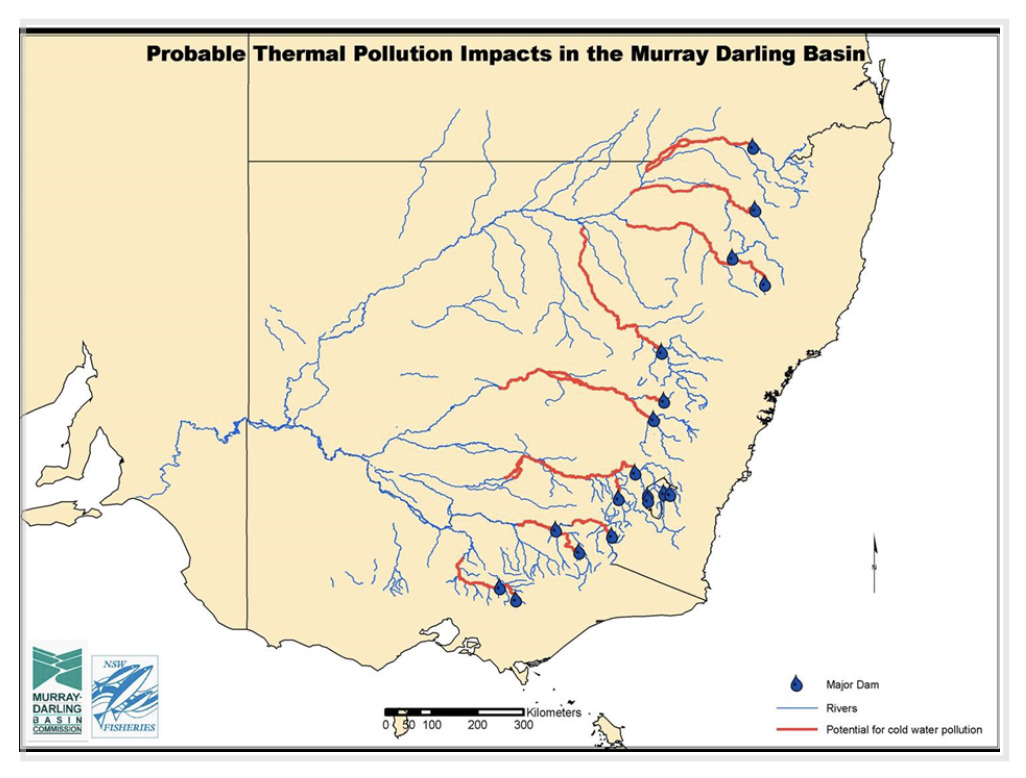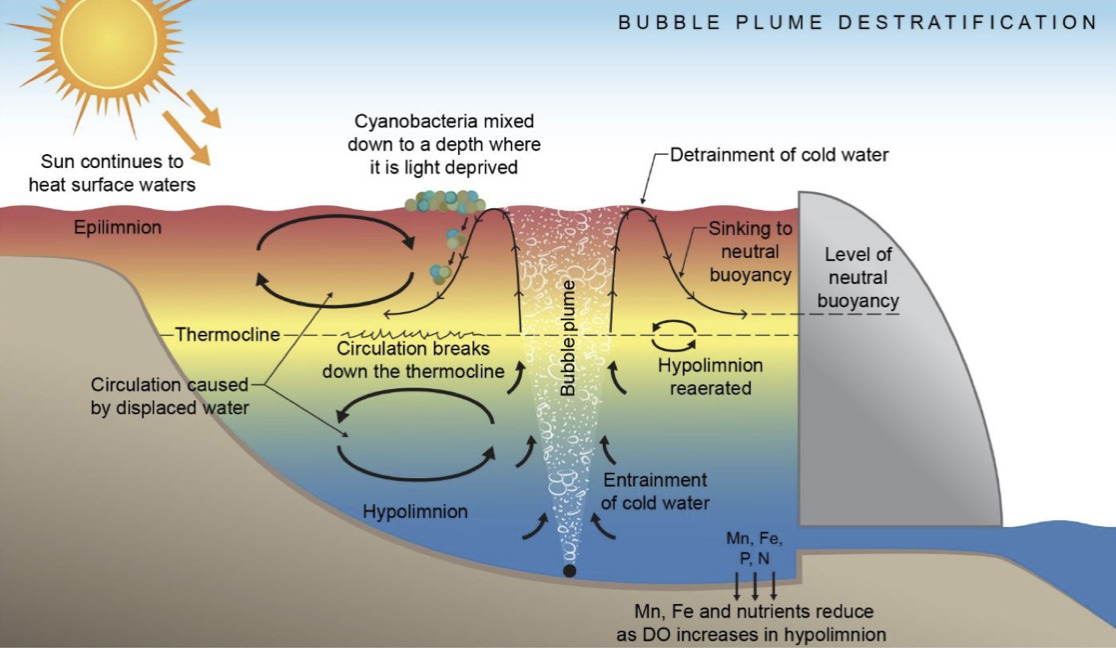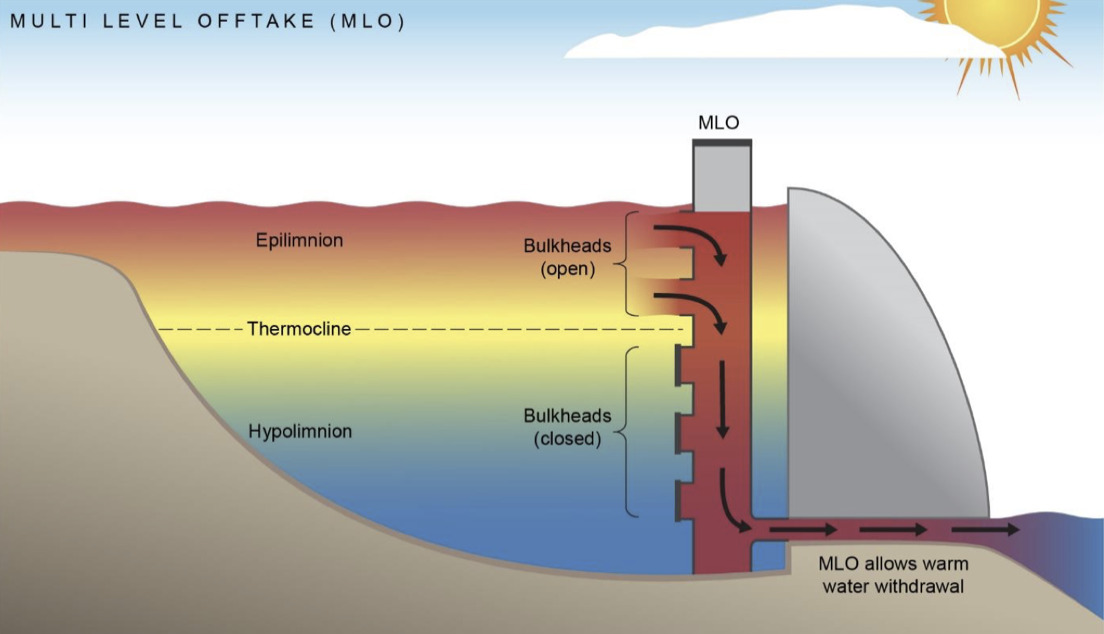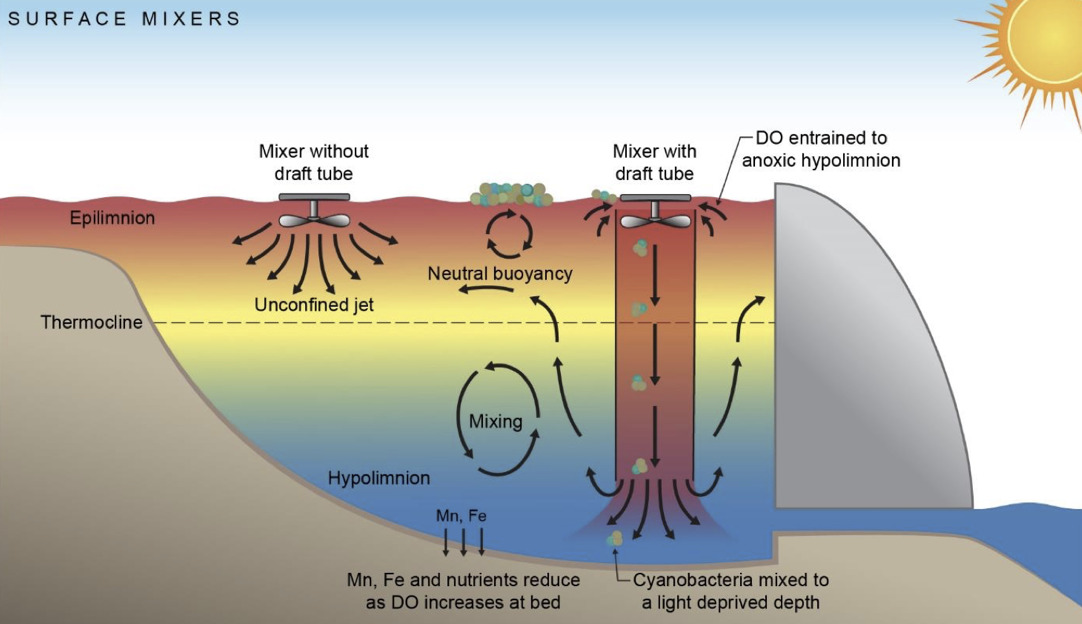What is cold water pollution?

When you hear the word pollution, chances are your mind visualises debris, rubbish or some other unsightly item in an area it shouldn’t be. That might be along the banks of a picturesque river or sitting in white sand on a beach.
However, the definition of pollution is much broader than this. Pollution is the introduction of any substance which is harmful to an environment with adverse effects – tangible or not. Temperature in water can be so adverse to the environment it supports, particularly in our freshwater rivers that it has warranted pages of articles, reports, and research papers across many years.
A guide to cold water pollution
How does the water become cold in the first place?
At some stage in our lives, we have all swum in an outdoor swimming pool. Picture the scene: it’s the afternoon and the sun has been beaming down on the water all day. By the afternoon, the sun has worked its magic and when you dip your feet into the pool, the temperature is enough to convince you to jump in. Now, while it’s summer and the cooler temp is refreshing, there is always a sense of slight shock at the wall of cold water you encounter as your body passes the 1m mark.
The same process occurs in our inland freshwater impoundments, only on a much larger scale. Between spring and autumn, the water stored in large dams can form two layers: a warm surface layer above a cold bottom layer. The difference, however, is that the temperature disparities in the impoundments, where depths surpass 50 meters, are far beyond what we might experience in a swimming pool.
Why is cold water in an impoundment a problem?
In keeping with the swimming pool analogy, how many times does water spill over the edge when somebody dives in? It’s an unavoidable reality – when you dive in, waves are caused, and the pool structure can only withstand so much.
Much like this, our freshwater impoundments are constantly increasing and decreasing in water capacity as the seasons, rainfall and conditions change across Australia. Throughout this time, particularly in the warmer months, water is drawn from the impoundments into the nearby rivers and creeks due to the high irrigation demand throughout the Murray Darling Basin.
The issue, however, is that in the majority of our dams in NSW are only equipped to draw water from the bottom of the dam where the water is cold. With the average depth of the river being considerably less than the dam, the temperature of water being drawn from the dam is significantly colder than the natural temperature of the river downstream. This is what leads to the ‘introduction of a substance which is harmful to an environment’ even though it’s fresh and clean it will be harmful to so many species.
Burrendong Dam is located on the Macquarie River upstream of Wellington in the central west region of New South Wales. The figure below shows the impact cold water pollution releases from Burrendong Dam over 300km downstream to Warren. The observed temperatures are below the breeding temperatures of Silver Perch, Golden Perch and Freshwater Catfish (Credit: Sherman 2000).
Why is cold water harmful?
Native fish, along with other aquatic animals such as turtles and frogs, are cold-blooded. Their survival, growth and reproduction depend on the temperature of their environment. Fish are poikilothermic organisms. This means they take on the temperature of the water that surrounds them, so any change can affect their life processes. For this reason, abnormally cold-water temperature can affect three fundamental aspects of a fish’s life.
Survival
According to the NSW Fisheries website, cold water pollution can reduce the growth of fish and even reduce their chance of survival. A study by NSW Fisheries at Burrendong Dam compared silver perch survival and growth in cold and warm water releases. Results showed 100 per cent survival in the warm channels (18 to 24oC) compared to 25 per cent survival in the cold channels (12 to 14oC). Significantly more silver perch survive in the warmer water channels than in the cold-water channels.
Breeding
Fish will not breed if conditions are unfavourable. Even in the right season for breeding and with appropriate rises in the river, breeding may not occur if seasonal temperature changes and thresholds are not reached. As a result of cold water pollution, native warm-water fish may fail to breed, they may breed late in the season, fish eggs may fail to hatch, or the young may die or develop more slowly.
Lines mark time of year and breeding temperature for 4 native and one introduced fish in the MDB (Copeland pers comm)
Food
The lack of seasonal temperature variation has been found to reduce the numbers of macroinvertebrate (waterbugs) species that would normally be expected in the warm summer period. Studies show that eggs of mayflies do not develop if temperatures are too low. Further, young fish depend on zooplankton blooms as a food source. Low water temperatures can delay or prevent the development of these blooms, eliminating an important food source.
Invasive Species
Aside from pollutants such as cold water, Aussie native fish also battle with other major issues, one of which is the introduction of invasive fish species such as European carp. While being generally less active in lower temperatures, carp will continue to feed and breed even in cold water conditions and do not suffer the same impacts that Aussie native fish do. This means that while all fish suffer from sudden drops in temperature, the species that is least affected will eventually replace the others.
Tune into the Reel Action Fishing Podcast as they chat to Matt Hansen on Cold Water Pollution.
How big is this problem in NSW?
Cold water pollution is one of the key factors behind the reduction in the range and abundance of native freshwater fish species in NSW. Following a report from NSW DPI Fisheries, it is estimated that up to 3,000 kilometres of mostly lowland river habitat in NSW is affected by cold water pollution.
Research has indicated that cold water pollution eliminates native fish species from affected rivers. For example, the construction and operation of Dartmouth Dam on the Mitta Mitta River eliminated Murray cod, trout cod and Macquarie perch downstream within a few years.
Freshwater catfish are also now extremely rare in western rivers where they used to be abundant in the 1960s. Their absence from the Murray River between Hume Dam and Yarrawonga weir and from the Murrumbidgee River between Burrinjuck Dam and Wagga Wagga, when they are otherwise abundant further downstream, is almost certainly due to cold water releases from both dams.
Based on available scientific evidence, it is reasonable to conclude that cold water pollution is one of the more serious degrading processes operating in the main rivers of the Murray-Darling Basin as well as some coastal rivers. It is also probably one of the key factors behind the reduction in abundance and range of native freshwater fish species.
Can anything be done? And is it being done?
To combat the issue of cold water pollution, there are a range of solutions we can look at, some of which have been tried and tested, and others which are in the pipeline and under development.
Thermal Curtain
Suspended curtains made of a robust polymer can be suspended or submerged around a dam offtake to mitigate cold water releases. By using material that is relatively impermeable to water, flows are directed either over or under the curtain during downstream release events.
By submerging and anchoring a curtain from the bed up, warm surface water can be directed to the offtakes to mitigate cold water pollution downstream. Conversely, a curtain may be suspended off the bed of a reservoir and extended upwards of the water surface, with the intention of avoiding the downstream release of toxic algae residing in the surface layers.
Credit: https://www.wrl.unsw.edu.au/sites/wrl/files/uploads/Projects/WRL-TR2021-17-A-review-of-artificial-destratification-techniques-for-cold-water-pollution-mitigation.pdf
Bubble Plume
These systems involve pumping compressed air through a pipe network to diffusers typically located in the deepest part of a reservoir. The air is diffused, often through piping with drilled small holes, into plumes of buoyant bubbles which rise through the water column to the surface. As the plumes rise through the water column to the surface, they bring cold, dense waters from the bottom to the warmer surface layers.
Cold water detrains from the rising plume at the surface, and due to the water density variation, sinks back through the density field to a depth of neutral buoyancy and propagates away from the centre of the plume. This causes local mixing in the vicinity of the bubble plume, dismantling the density structure and breaking thermal stratification.
Credit: https://www.wrl.unsw.edu.au/sites/wrl/files/uploads/Projects/WRL-TR2021-17-A-review-of-artificial-destratification-techniques-for-cold-water-pollution-mitigation.pdf
Multi-level offtakes
This option enables selective withdrawal from different depths in the reservoir to improve the quality of the release and mitigate downstream environmental impacts of reservoir stratification. It achieves this by withdrawing water from the dam at various levels above the thermocline, through the opening and closing of different intakes placed along the offtake pipe.
Credit: https://www.wrl.unsw.edu.au/sites/wrl/files/uploads/Projects/WRL-TR2021-17-A-review-of-artificial-destratification-techniques-for-cold-water-pollution-mitigation.pdf
Surface Mixers
These systems generally use a raft-mounted impellor located just below the surface of the reservoir to either jet water down, or draw-up water. The impellors are driven by a motor powered directly on the raft or nearby on shore.
These systems can be accompanied by a draft tube that extends below the raft to direct the jet to a desired depth. Much like bubble plumes, the water entrained responds to the water density variations and rises or sinks to a depth of neutral buoyancy, creating a mixing effect and destratifying temperature gradients in the vicinity of the system.
Credit: https://www.wrl.unsw.edu.au/sites/wrl/files/uploads/Projects/WRL-TR2021-17-A-review-of-artificial-destratification-techniques-for-cold-water-pollution-mitigation.pdf
When you see the phrase cold water pollution, you will know it is an artificial decrease in water temperature in a natural river and it has a huge impact on fish and most importantly must be fixed.







